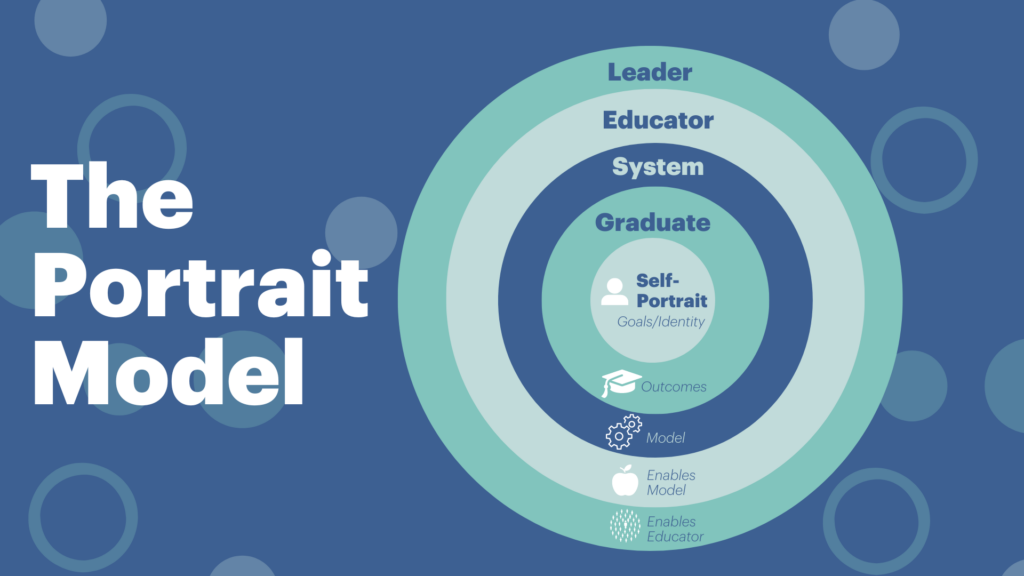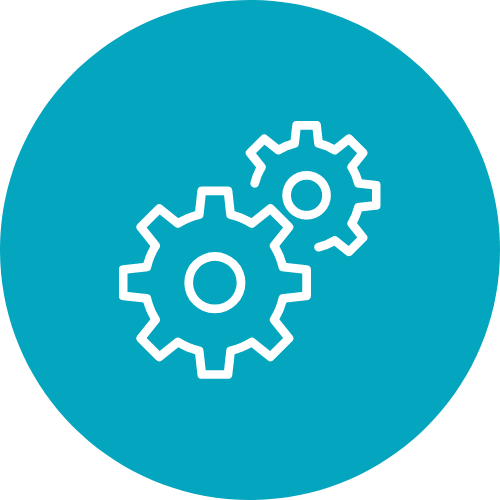Key Takeaways
- Dozens of federal, state and local policies impact pathway learning.
- All school systems face challenges developing, staffing, and sustaining relevant pathways.
- Regional goals can mobilize business and postsecondary partnerships and benefit priority pathways with application and acceleration opportunities.
Vision
Policies and systems define pathway options available to learners. For more than 100 years, learning options were limited by school district boundaries. Now, they often include unbundled, networked, and virtual learning experiences. Systems create equitable access to pathway learning across a region by considering location, enrollment, transportation, and support systems.
Policies create enabling environments for pathways to cross the boundaries of school and work and between secondary and postsecondary learning.
In 2022, the Department of Education released a vision for Unlocking Career Success that included four components:
- Received personalized career guidance and career advising and navigation that is informed by labor market data, plans for next steps, and empowers students and their families to make real choices about their futures;
- Engaged in paid work-based learning in which they solve real world problems, hone their skills, build networks of social capital, and gain experience in the workplace;
- Received their first industry credential(s) that demonstrates that they have the competencies and skills that employers are seeking; and
- Earned at least 12 college credits, including academic content and career connected courses through dual enrollment opportunities.
Overview
Pathways represent choices about integration and application around career opportunities. Some pathways are longstanding institutions, some are dynamic creations. Serving all learners requires an intentional portfolio of pathways. Given increasingly personalized approaches to pathway formation, heightened interest in entrepreneurship, and new digital models of work and learning, a pathway ecosystem might be a better metaphor–an ecosystem enabled by policies and systems that extend opportunity to all learners.
Policies
“State policy is a critical lever for ensuring all learners—regardless of age—have access to high-quality pathways that lead to higher-wage careers,” according to ExcelinEd. They identified
20 key education-to-workforce policies, organized within 6 focus areas, that can deliver success to learners and value to communities.
| Learner Pathways Ensure vertical alignment to workforce needs, robust funding, collaboration across agencies and equitable access for all students. | – High-quality CTE Programs – Targeted CTE Program Funding – Return on Investment Analysis – State Cross-Agency Shared Priorities |
| Postsecondary Acceleration Streamline postsecondary learning and empower high school students to earn credit to reduce the time required to earn postsecondary degrees. | – Early College & P-TECH Designations and Incentives – Credit for Prior Learning and Credentials – College Articulation Agreements – Co-Requisite Enrollment & Support |
| Postsecondary Credential Attainment Reduce barriers—such as funding, lack of alignment and missed opportunities—to help more students attain postsecondary credentials. | – Reverse Transfer Credentials – Last Dollar/Last Mile Financial Aid – Outcomes-Based Funding – Stackable Degrees and Credentials |
| Workforce Readiness Ensure the skills, credentials and apprenticeships students pursue help to prepare a strong workforce within the state. | – Work-Based Learning – Apprenticeships – Industry-Valued Credentials – Skills Retraining/Credentialing |
| Employer Engagement Incentivize workforce engagement in student pathways and reduce the barriers that keep employers from participating. | – Industry Engagement Incentives – Legal Barriers |
| Data-Driven Decision Making To ensure the strength of all the other policies, there must be cross-sector agreement on outcomes, strategies to get there and data to track progress. | – Program Quality Measures – State Longitudinal Data System |
American Student Assistance commissioned Extending the Runway, a report on state policies influencing middle school career exploration. It concluded that “Most states have identified middle school career exploration as an important component of a student’s education (73%), dedicate funding to support activities (92%), and have some sort of requirements in policy (92%); but few states measure and support the quality of these practices by collecting data (20%), including in accountability plans (16%), or having a strong ecosystem of organizations supporting the work (8%).
ASA recommended a unified state vision and measurable goals for middle school career exploration. They urged coordination across state leadership and leveraging state Perkins V and Every Student Succeeds Act (ESSA) plans.
Systems
State policies set parameters, but in America’s decentralized system, school districts are the local education authorities (LEA) that are the primary actors. As taxing entities, most school districts raise operating and capital funds through local levies, build and operate schools, and define curriculum and graduation requirements. Most are small districts serving small communities (more than 11,000 school districts serve less than 5,000 students) making it challenging to organize, staff, and sustain multiple pathways relevant to the regional economy.
The 120 largest school districts (serving more than 43,000 students) are urban and suburban participants in major metropolitan areas. Most big districts offer a collection of pathways via comprehensive high schools, specialty schools and career centers. Some have created equitable pathway portfolios (with intentionality around location, enrollment, and transportation) and collaborated with the broader metro ecosystem. Many leading large districts developed career academies with national intermediaries including NAF, Linked Learning, ConnectED, and Ford NGL and support STEM pathways with Project Lead The Way (PLTW) curriculum.
In 46 states and jurisdictions, charter schools are also local education authorities but without taxing authority and the associated facilities funding. Most charter schools are independent nonprofits while 43% are part of managed networks. Historically, most charter high schools offered a single college preparation pathway and operated as a school of choice. Only six cities have unified enrollment systems that present district and charter options to families as a portfolio.
School systems large and small, urban and rural, district and charter, all face challenges in creating equitable access to high quality relevant pathways. A few examples of local solutions are shown below.
| LEA | Examples | Pathway Challenges | Pathway Solutions |
| Small rural districts | Roscoe ISD & 20 partner rural districts | How to offer relevant rural pathways? | CEN network of P-20 services including P-TECH |
| Small suburban districts | Grandview C-4 SD, Center SD, Hickman Mills SD | How to offer relevant pathways? | Multi-district pathway portfolio with transported choice within regional Real World Learning initiative |
| Small rural & suburban | 16 small rural and suburban NC districts | How to offer new high tech pathways? | SparkNC network offers innovative stackable units of study with delivery options |
| Small city & suburban | St Vrain Valley Schools | How to offer an equitable, relevant portfolio? | Career academies, P-TECH, Innovation Center |
| Large urban district | Dallas Independent School District | How to offer an equitable, relevant portfolio? | Career academies, P-TECH & Career Institutes in each zone with transportation |
| Suburban district | Blue Valley School District | How to offer personalized pathways? | Center for Advanced Professional Studies (which inspired the national CAPS Network) |
| Statewide charter | Harmony Public Schools | How to offer a valuable pathway of choice? | Project-based STEM pathway |
| Statewide charter | VLACS | How to personalized pathways? | Customizable virtual and community experiences |
About a quarter of states offer Education Savings Accounts which provide direct funding to parents for educational purposes. About half the parents use ESA funds to subsidize private school tuition, the other half use the funds to support individual and collective homeschooling activities. While they serve a small percentage of students nationally, in a few markets (like Phoenix) ESA options are a growing part of the pathway ecosystem.








